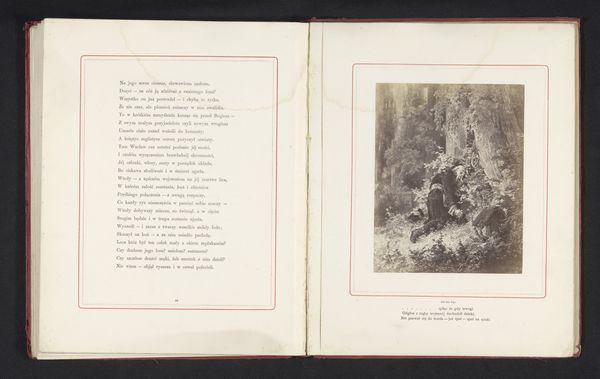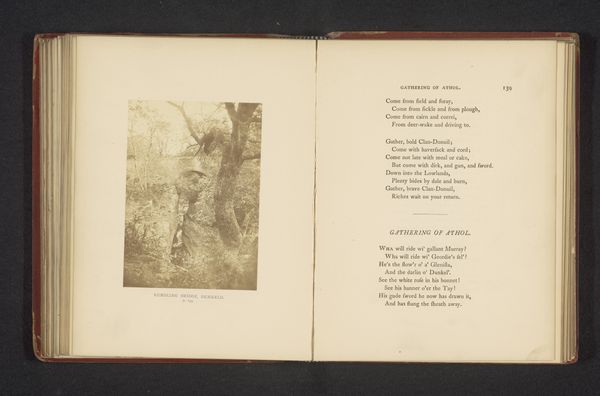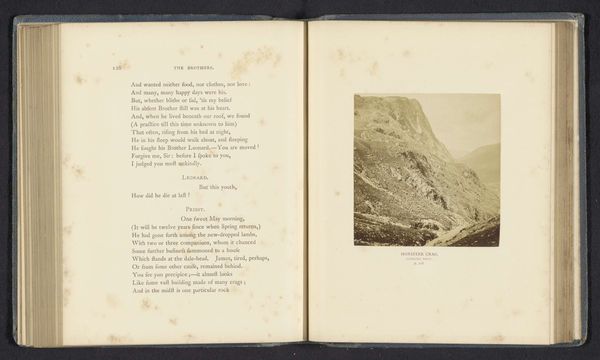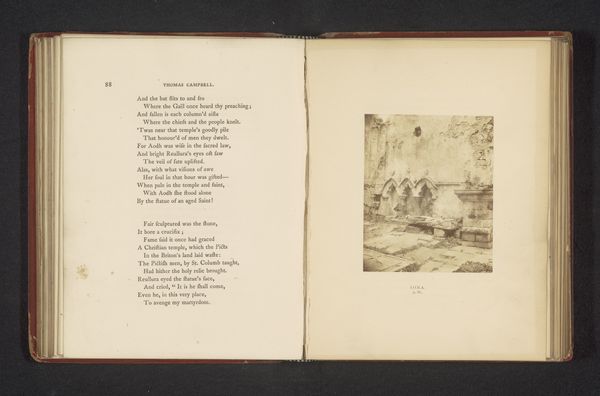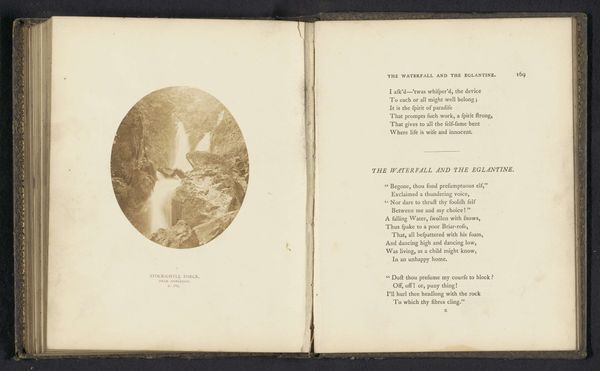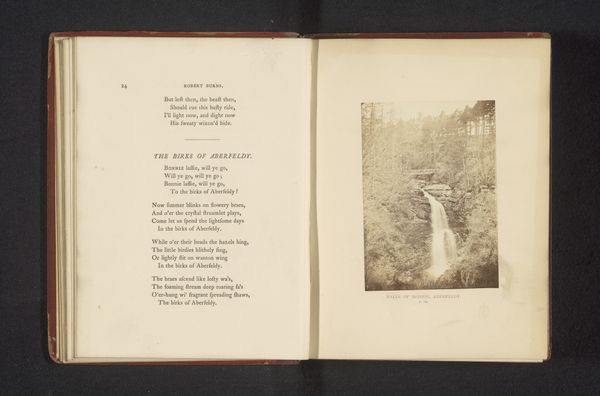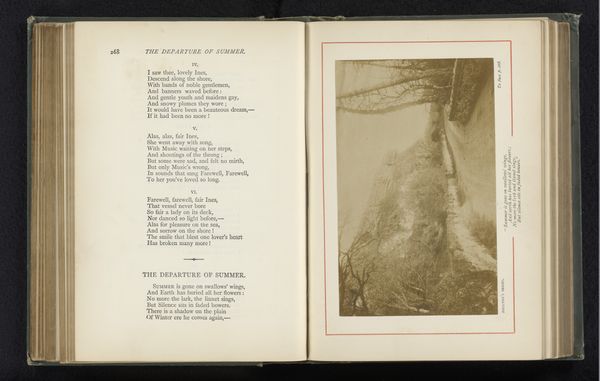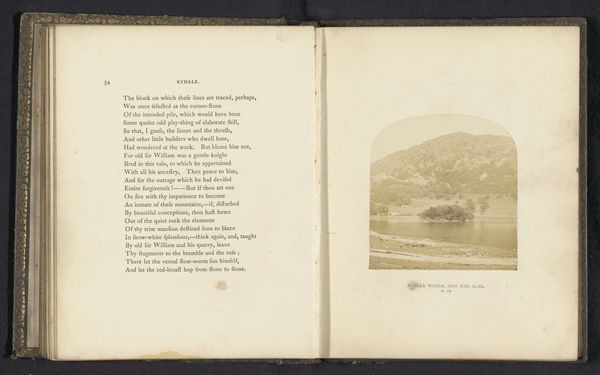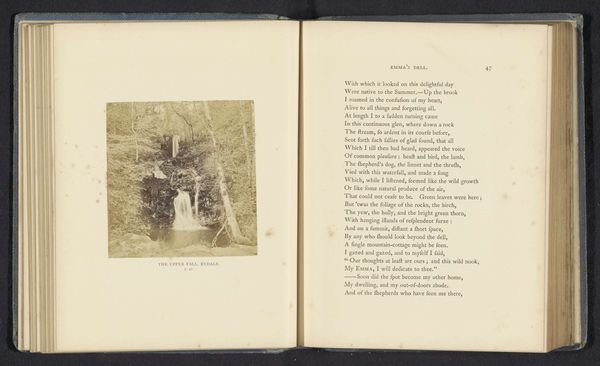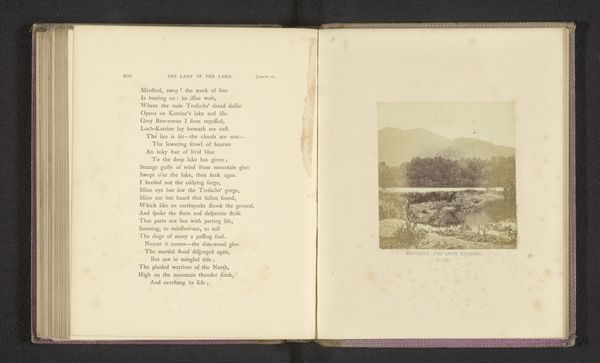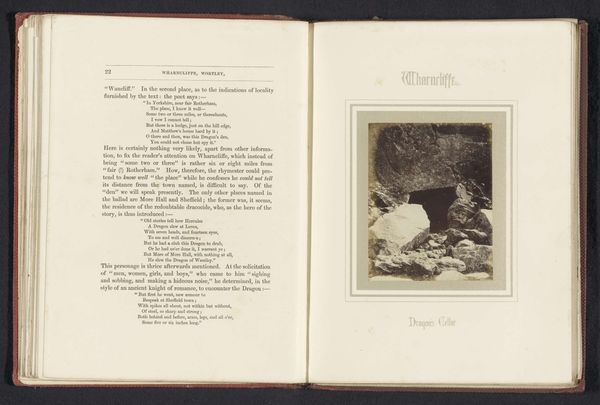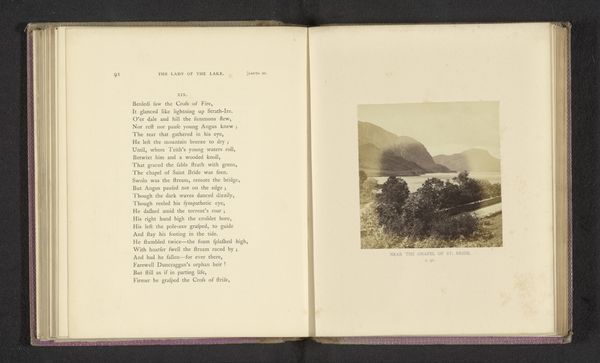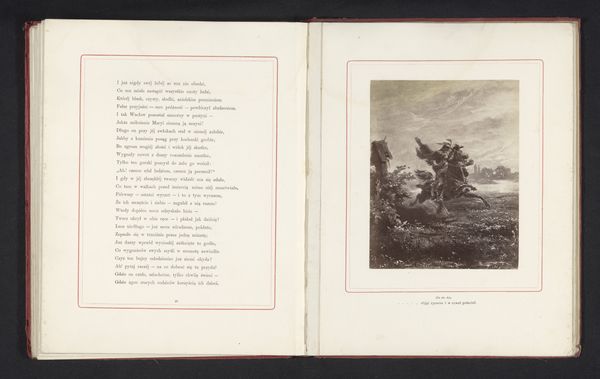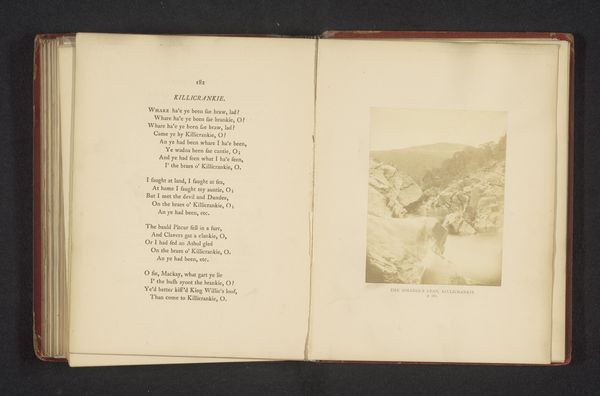
print, photography, albumen-print
# print
#
landscape
#
waterfall
#
photography
#
albumen-print
Dimensions: height 92 mm, width 87 mm
Copyright: Rijks Museum: Open Domain
Editor: We’re looking at "Dungeon-Ghyll," a landscape photograph by Thomas Ogle, made before 1870. It's an albumen print, sepia-toned and presented in a bound volume alongside poetry. The image depicts a very steep, rocky ravine with a waterfall. What I immediately notice is the stark contrast and the overwhelming sense of nature's power… How do you interpret this work? Curator: I see this image as participating in the Romantic era's fascination with the sublime. We can situate it within a discourse that privileges raw, untamed nature as a site of both awe and potential terror. Ogle captures Dungeon-Ghyll as a space seemingly untouched by the human, a direct contrast to the burgeoning industrial landscape of 19th-century Britain. Do you think this untamed landscape has social or political implications for a contemporary viewer? Editor: I suppose in our current era of climate change and ecological awareness, it makes me think about conservation. It highlights the importance of preserving such landscapes. Maybe even speaks to class and access, who gets to experience these "untouched" spaces. Curator: Exactly! Considering that this photograph was included in a book likely owned by the upper classes, it points to how access to nature has always been unevenly distributed along class lines. It underscores the notion of wilderness as a constructed ideal. Moreover, thinking about photographic technology at the time, the albumen process itself involved intensive labour and specialized knowledge. The image naturalises a very active production. Editor: That makes me see it differently! So the photograph itself obscures a very human process to make it seem "untouched." Curator: Precisely. And what seemed "natural" becomes part of a complex web of social, economic, and technological relationships. Editor: Wow, I had only been focusing on the picturesque waterfall at first glance. Now I’m also reflecting on ideas around privilege, class and hidden labor within the photograph's own production. Curator: And this critical lens encourages a much more in-depth understanding of visual culture from that time!
Comments
No comments
Be the first to comment and join the conversation on the ultimate creative platform.
